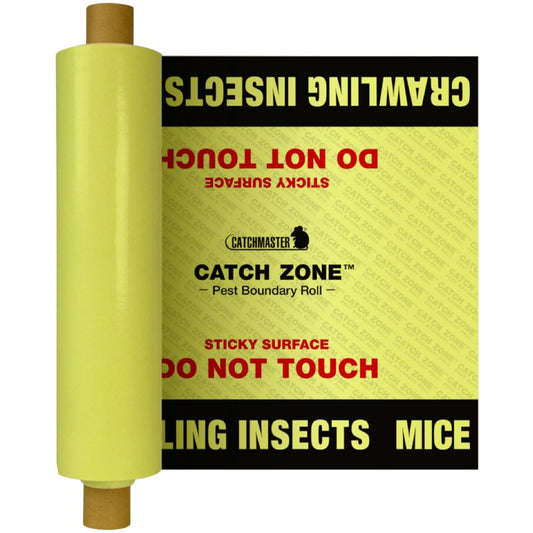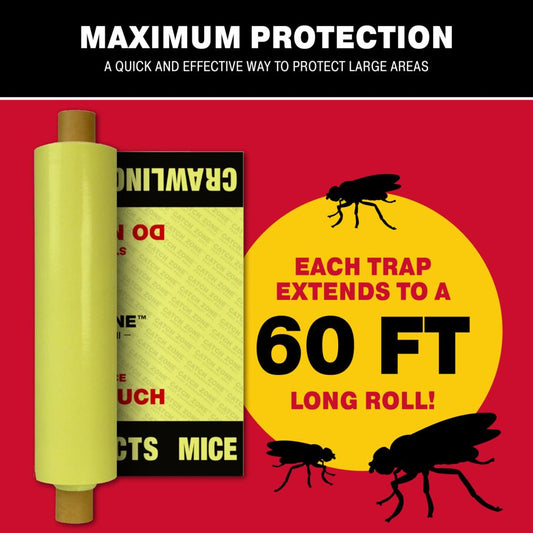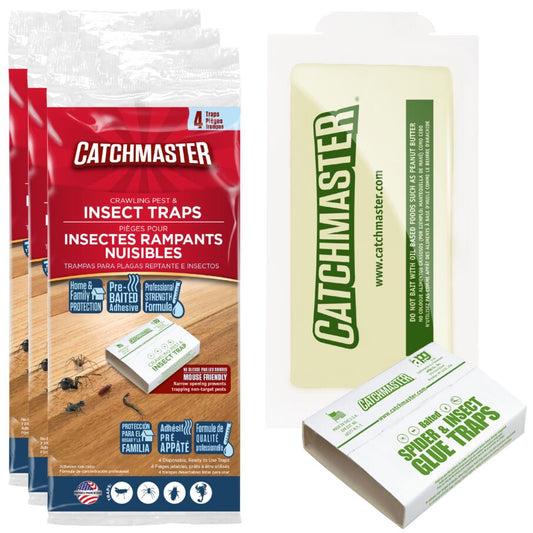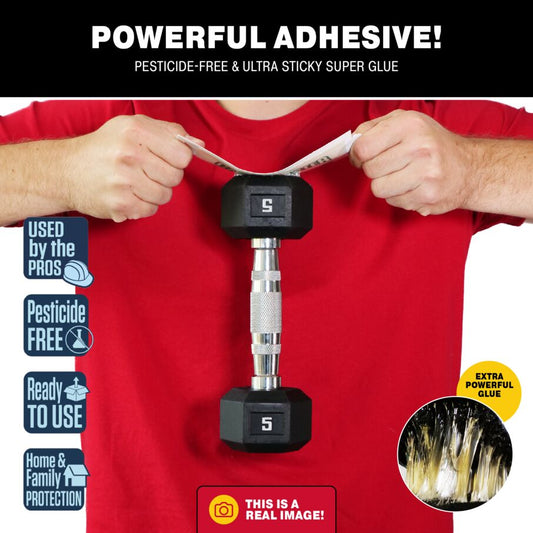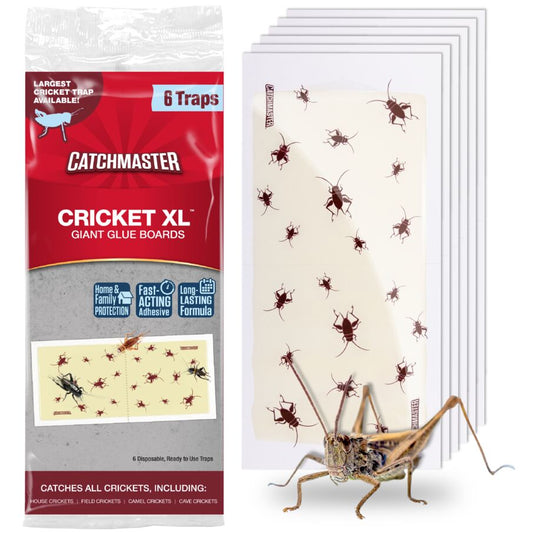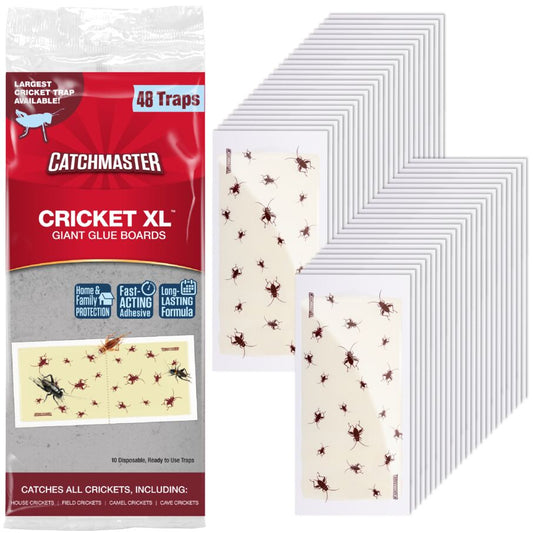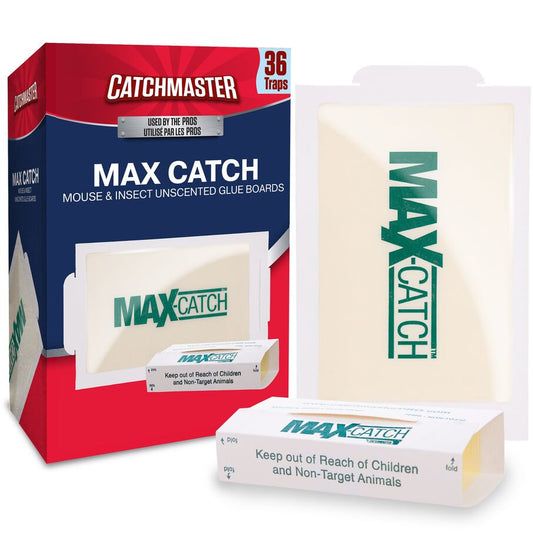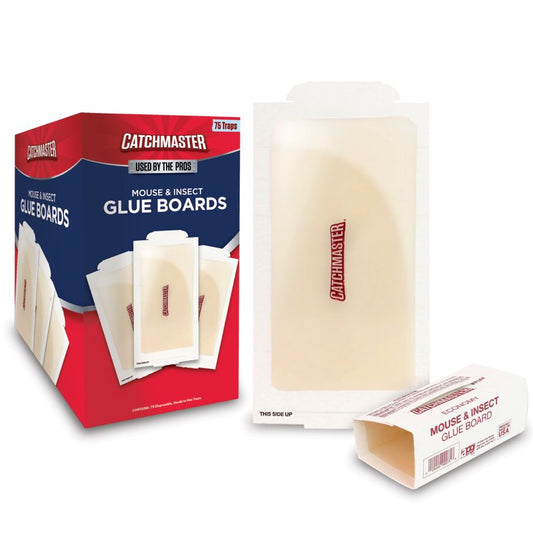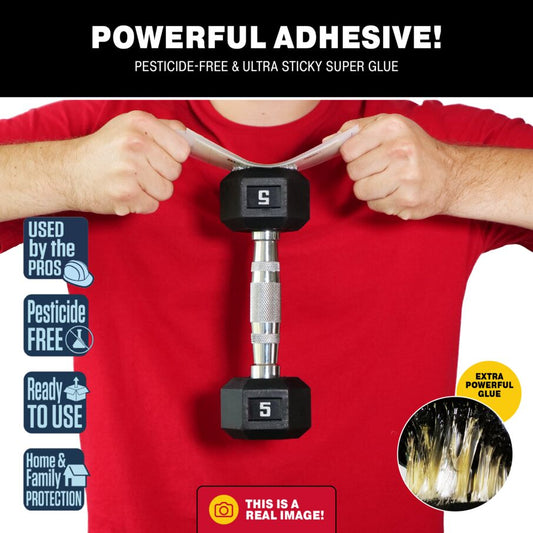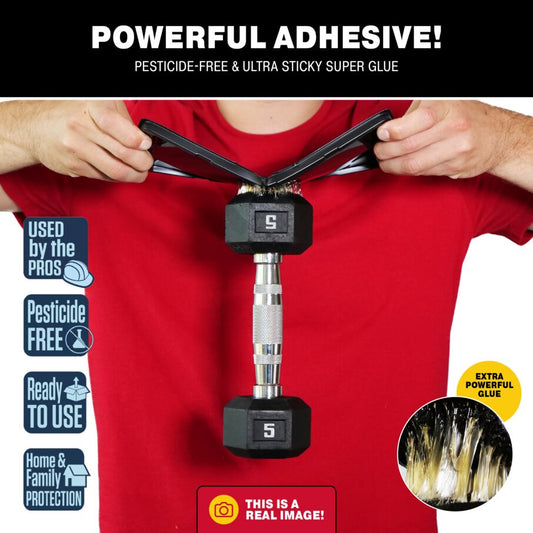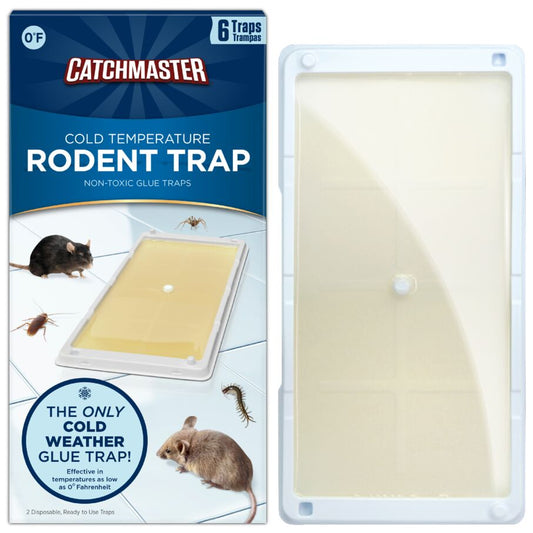Cricket Traps
No more noisy crickets in your house! The cricket-stopping power™ of Catchmaster®’s cricket traps keeps your home pest-free so you can enjoy your space in silence again!
-
Catch Zone Pest Boundary Roll - Large Area Glue Trap
$84.99($84.99/trap)Regular price $84.99 USDRegular priceUnit price / per$84.99 USDSale price $84.99 USD -
Crawling Pest, Spider & Insect Glue Board Traps
$10.49($0.87/trap)5.0 / 5.0
(3) 3 total reviews
Regular price $10.49 USDRegular priceUnit price / per$10.49 USDSale price $10.49 USD -
Cricket XL Giant Glue Board Traps
$13.99 – $71.99($2.33 - $1.5/trap)5.0 / 5.0
(4) 4 total reviews
Regular price From $13.99 USDRegular priceUnit price / per$13.99 USDSale price From $13.99 USDQuick Add
Select Size

Cricket XL Giant Glue Board Traps
-
Max-Catch Unscented Glue Board Traps
$23.49 – $33.99($0.65 - $0.47/trap)4.9 / 5.0
(24) 24 total reviews
Regular price From $23.49 USDRegular priceUnit price / per$23.49 USDSale price From $23.49 USDQuick Add
Select Size

Max-Catch Unscented Glue Board Traps
-
Mouse and Insect Glue Board Traps
$31.99($0.43/trap)5.0 / 5.0
(32) 32 total reviews
Regular price $31.99 USDRegular priceUnit price / per$31.99 USDSale price $31.99 USD -
Pest Protection Kit with Glue Boards and Trays
$14.99($1.87/trap)Regular price $14.99 USDRegular priceUnit price / per$14.99 USDSale price $14.99 USD -
Rodent & Insect Glue Trays for Cold Weather
$25.99($4.33/trap)5.0 / 5.0
(2) 2 total reviews
Regular price $25.99 USDRegular priceUnit price / per$25.99 USDSale price $25.99 USD
Safe and Effective Cricket Traps for Your Home
Your safety is our top priority. Our cricket control products are both family and pet-friendly without sacrificing their effectiveness! Our unique, non-toxic adhesive formula helps you maintain a safe, pest-free environment without compromising the well-being of your loved ones.
How Does a Cricket Trap Work?
Our sticky traps for crickets use a specially formulated adhesive that effectively immobilizes crickets upon contact. The glue boards also feature a special cricket design to visually attract live crickets to the trap.
Place our traps strategically around areas where crickets are active, such as along walls, in corners, or near entry points. Once a cricket steps onto the trap, it becomes stuck, allowing for easy removal and disposal. No additional bait required! It’s a straightforward solution to cricket infestations without the need for harmful chemicals.
Why Choose Catchmaster’s Pest Control Solutions?
Catchmaster’s Intelligent Pest Management™ approach ensures that our products are tailored to target specific pests, providing peace of mind and a cricket-free environment. We combine scientific knowledge with advanced technology to create cricket glue traps that are both effective and safe for homes with children and pets.
Shop Cricket Traps That Work
Handling cricket infestations should be straightforward. Our versatile and effective glue traps for crickets and other crawling insects have been used for decades as reliable cricket control for professionals in residential and commercial settings.
Trust the choice the professionals make. Become a Catchmaster!
FAQs About Cricket Traps
Are cricket glue traps safe to use around children and pets?
Yes! Our special glue traps are designed without toxic or harmful chemicals, making them the perfect choice for homes with pets and children.
How do I choose the right cricket traps for my home?
When shopping for traps, consider the size and location of your infestation. You should also look for traps that are non-toxic, low-maintenance, and easy to use.
Where should I place cricket traps for the best results?
For the best results, place your trap in locations with the most cricket activity. While primarily designed for indoor use, Catchmaster glue traps can be utilized in sheltered outdoor areas. Protect them from extreme weather conditions, such as rain or direct sunlight, which can compromise the adhesive's effectiveness. When used outdoors, place traps in covered or shielded areas, such as under eaves or in garages, to extend the reach of your pest control efforts.
Can I use multiple types of cricket traps at the same time?
Yes! Using multiple traps in the same space will help to maximize your catch! You can also combine Catchmaster’s traps with exclusion techniques, such as sealing entry points and removing food sources, as a more comprehensive approach to pest management. This integrated strategy ensures that you address all aspects of a cricket infestation, leading to more successful outcomes.
How long do cricket traps last?
While Catchmaster glue traps do not have a specific expiration date, exposure to dust, moisture, or extreme temperatures can negatively impact their effectiveness. Store unused traps in a cool, dry place away from direct sunlight to preserve their adhesive properties.
What should I do if the cricket catcher doesn't seem to be working?
The glue boards work best in warm, dry environments. If your cricket trap isn’t working properly, clean the area of dust and debris and remove clutter. You can also try moving traps to another location, adding more traps to the area, or switching out your current traps for new, clean ones. Alternatively, you can also reach out to an experienced Catchmaster using the chat on our website or call our customer service line at: (800) 458-7454 for more direct guidance on maximizing your catch.

